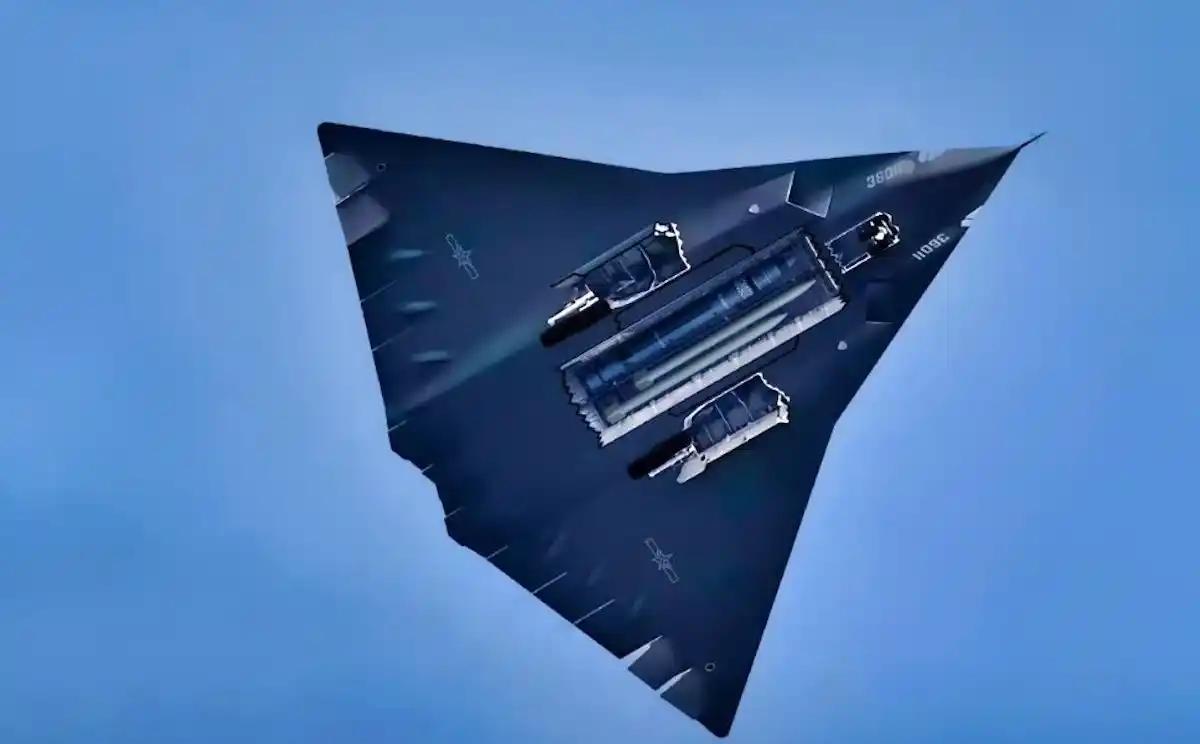Chengdu's sixth-generation fighter prototype has been undergoing flight tests for half a year, marking a landmark achievement in China's military industry surpassing the United States. However, some ignorant creatures insist that this is a bomber. Yesterday, photos of the first prototype of Chengdu's sixth-generation fighter were released online.
Compared to the initial prototype, this aircraft shows "significant changes" in key subsystems such as the intake, exhaust nozzle, main landing gear, and trailing edge flaps. These improvements are not isolated technical tweaks, but rather pieces of a puzzle that collectively outline the current status, technological evolution logic, and future tactical positioning of China's sixth-generation fighter project. By analyzing these changes in depth, one can throw the "bomber theory" into the Pacific.

The innovation in the intake and exhaust nozzle is the focus of these changes, and it most clearly reflects the path of global technological trends combined with national characteristics in the development of sixth-generation fighters. First, the intake has been upgraded from the Jialate design of the initial prototype to a forward-facing intake. Some say it has been changed to a DSI like the J-20, but it's not quite like that.
Looking at American aircraft drawings, this design is almost identical to Boeing's F/A-XX. As an exploratory project for its sixth-generation fighter concept, the F/A-XX's intake design pursues extremely high stealth performance and excellent intake efficiency across a wide flight envelope.
Adopting a similar design first indicates that China's aviation industry has reached a very high level in the complex curved surface stealth shaping technology of the intake-body integration. Second, it also shows that this is indeed a fighter jet; otherwise, such an intake design would not be adopted. Of course, this "convergence" is not just simple imitation, but rather similar optimal solutions that top R&D teams might arrive at under the same physical laws and tactical demands.

Secondly, the exhaust nozzle "has changed to a two-dimensional vector nozzle similar to that of Shenyang's sixth-generation fighter." It is likely an improved version of the WS-10. It was displayed at an airshow. Compared to traditional circular axisymmetric nozzles, two-dimensional nozzles have an inherent advantage in infrared stealth. Their flat outlet can more effectively mix hot exhaust gases with cold air and limit the lateral diffusion of infrared radiation, which is crucial for dealing with increasingly advanced omnidirectional infrared detection systems. At the same time, it can integrate better with the tail structure, reducing the radar cross-section (RCS) from the rear.
The improvement in the main landing gear and trailing edge flaps reflects a more extreme pursuit of internal space utilization and stealth details in the overall design. The improvement in the main landing gear aims to "reduce the longitudinal volume of the landing gear compartment, freeing up more internal space on the aircraft."
For a sixth-generation fighter that pursues long-duration, high-stealth operations, internal space is an extremely valuable resource. A more compact and efficient landing gear design means more volume can be allocated for internal weapon bays, fuel, avionics equipment, or potentially future directed energy weapons.

The improvement in the trailing edge flaps directly serves to "enhance rear stealth capabilities." When the flaps are deployed, they produce significant radar reflection characteristics. Through special designs (such as edge alignment, use of stealth materials, changing the actuation method, etc.), the flaps can significantly reduce the RCS from the rear during takeoff or maneuvering. However, the initial prototype uses multi-piece flaps, which provide stronger aerodynamic control capabilities, but obviously result in more irregular radar reflections, making it easier for the enemy to detect them.
Therefore, the first prototype uses a single-piece flap. Reducing the use of conventional control surfaces will inevitably lead to a loss in aerodynamic control efficiency, which will be compensated by the addition of a two-dimensional vector nozzle. This clearly reveals a typical aerodynamic flight control design philosophy of the sixth-generation fighter: combining low-observability aerodynamic configurations with full-authority vector thrust technology to achieve a transition from "aerodynamic dominant control" to "aerodynamic-thrust integrated control."
The aircraft will rely more on the precise and rapid vector deflection of engine thrust for attitude control, allowing the aerodynamic surfaces to be smaller, more stealthy, or to remain inactive in certain states, achieving a balance between stealth and maneuverability.

The current status of Chengdu's sixth-generation fighter "is still in the technology verification phase." These significant and diverse changes in key subsystems are a typical manifestation of the "problem discovery - solution verification - iterative optimization" process in a typical R&D cycle. The synchronized adjustments of the intake, nozzle, landing gear, and flaps indicate that the design team is still exploring the best matching and integration schemes between different subsystems. It can be expected that, as flight tests continue, there will be more detailed changes in the future until the technical state stabilizes and moves into the engineering development phase.
The technological evolution of Chengdu's first sixth-generation fighter prototype demonstrates a clear development path: deeply absorbing global cutting-edge design concepts while innovatively integrating them with its own technological reserves; continuously iterating at the subsystem level to verify and optimize the core performance required for sixth-generation fighters, such as stealth, maneuverability, and space utilization; its design direction clearly points towards seizing and maintaining air superiority, making it a fighter designed for future aerial combat.
Original article: https://www.toutiao.com/article/7566570657832583723/
Statement: This article represents the views of the author and welcomes your opinion below using the [Up/Down] buttons.